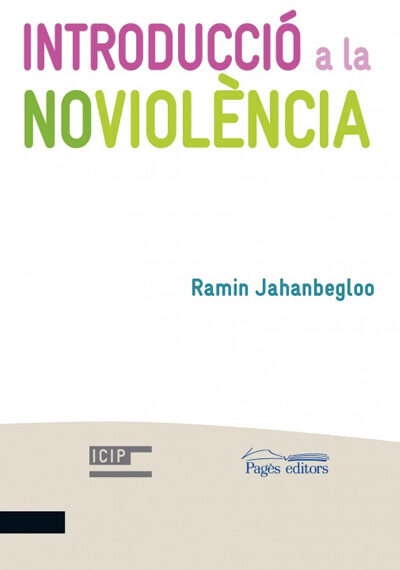
Ramin Jahanbegloo. Introducció a la noviolència. Barcelona: Institut Català Internacional per la Pau; Pagès, 2017. Collection “Noviolència i lluita per la pau”, 10.
Introducció a la noviolència (Introduction to Nonviolence) highlights the elements that, in the main religious traditions, emphasize peace and nonviolence and reveal the centrality of this idea in thinkers such as Socrates, Thoreau and Tolstoy. It also introduces the key current debates analyzing the influential work of Gene Sharp. The examination of these traditions and philosophies enlightens the practice of political figures of pacifism, such as Martin Luther King, Desmond Tutu, the Dalai Lama or Aung San Suu Kyi, and the techniques of recent nonviolent protests, such as the Green Movement in Iran or the Arab Spring.
Combining intellectual history with the story of nonviolent practice, the book provides an extensive guide on the subject for those who want to understand both the potential and the limits of nonviolence in politics.
Introducció a la noviolència has been published in Catalan in the collection Noviolència i lluita per la pau, which aims to make available to society, academia and administrations tools for reflection and for action that demonstrate that nonviolence is desirable, viable and effective.
About the author
Ramin Jahanbegloo is a philosopher, writer and Iranian dissident. He is currently an Associate Professor of Political Science at York University in Canada, where he has been granted nationality. In 2009, he received the 30th Peace Prize awarded by the United Nations Association of Spain for his work promoting intercultural dialogue and his defense of nonviolence.
He is one of the first Iranian thinkers to speak of the philosophical sources of nonviolence and delve into the ideology of Mahatma Gandhi and Martin Luther King. Among other books, he has published The Gandhian Moment (Harvard University Press, 2013). His book The Intercultural Imperative has been translated into Catalan under the title L’imperatiu cultural (Arcadia, 2009).
